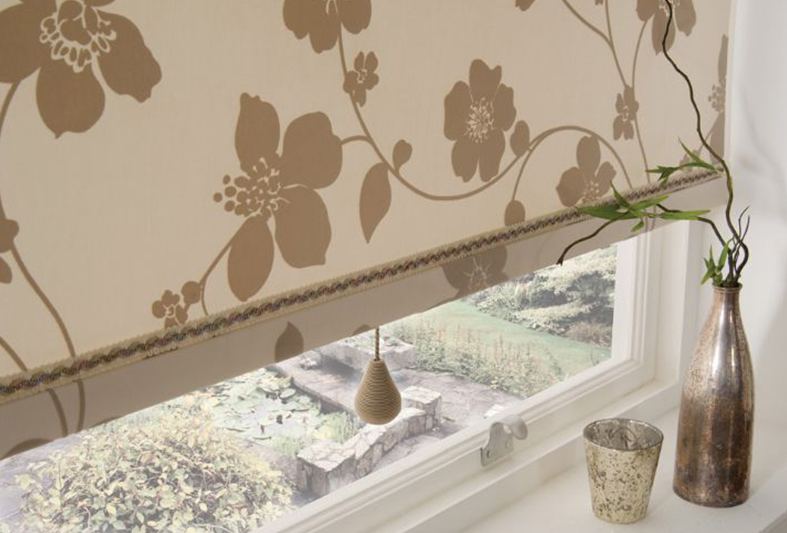How to Fix Common Problems with Roman Blinds

Having been around for two thousand years, the Roman blind has remained impressively loyal to its original design. However, the hanging fabric, once used by the Romans to prevent dust being kicked into their home, has been mildly updated over the following millenia to become more stable, durable and long-lasting. Unfortunately, Roman blinds may still develop some faults, especially when not installed correctly.
The team here at Denton Blinds have constructed this handy article to highlight some of the more common problems found with Roman blinds, and our advice on how to fix them.
Contents
How to fix Roman Blinds
“My blind is hanging unevenly!“
A blind that skews to one side when it hangs is usually caused by the strings being uneven. This can be due either to the string being cut too short during installation or the string not being looped correctly through all the necessary fitting loops.
There are two ways to tell whether your string may be at a problematic length.
Method One
Firstly, look at the string furthest away from the blind. This should be the longest of the strings. If it is not the longest then this would indicate that the string was cut too short initially. Further, if there is a lot of tension in the string then this would also indicate it being too short. The string’s tension should be relatively relaxed and similar to that of the other strings. To remedy this problem, you will need to replace the string with one of a longer length.
Method Two
Alternatively, the string may in fact be too long, and this will be indicated by a significantly longer length or lack of tension than the other strings. This may be the result of the string not being correctly tied round the fitting loops.
To fix this, turn the shade over and examine the back to see whether any loops have been damaged or broken off. Replace the required loop and ensure the string is hooped round them all correctly.
“My cord is broken!”
A broken or worn cord can naturally happen over time due to the repetitive pulling force involved in lifting the blinds. Not all cords for Roman blinds come with the same thickness.
Some cords may not be suitable for the fabric they are lifting, especially if the cord is thin but the material is bulky. If the cord has become broken or worn quickly, our advice is to buy a thicker cord.
You will need to replace it by removing the blind, unlooping the current cord and replace it with the new one, threading it through all the necessary loops again.
“My blinds are not folding up neatly!”
One of the great features of Roman blinds is that as they are pulled up, they fold into attractive, pleated segments. It can be frustrating when you buy blinds specifically for this aesthetic and they don’t fold up correctly.
It is important when you first get Roman blinds that you handfold them where you want the folds to appear. This will define the creases and ‘guide’ the blind into the right place when raised.
If your creases are defined and your blinds continue to fold up incorrectly, your fabric may be too stiff. A good solution is to lay out your blind and iron out the fabric. Once this is done, the fabric should be loose again, but the creases will need to be redefined.
Hand fold your blind to how you want it to fold and run an iron over it again. Now your Roman blinds should fold up neatly, correctly and beautifully.
If you’re having problems with other types of blinds check out this post for more tips, tricks and fixes for all types of blinds and window furnishings.
Here at Denton Blinds, our expertise spans across all types of blinds. We’re here to help ensure you receive the highest quality, fully functioning blinds.
For more information about our blinds installation service, or to hear about any of our products, give our friendly team a call today.
